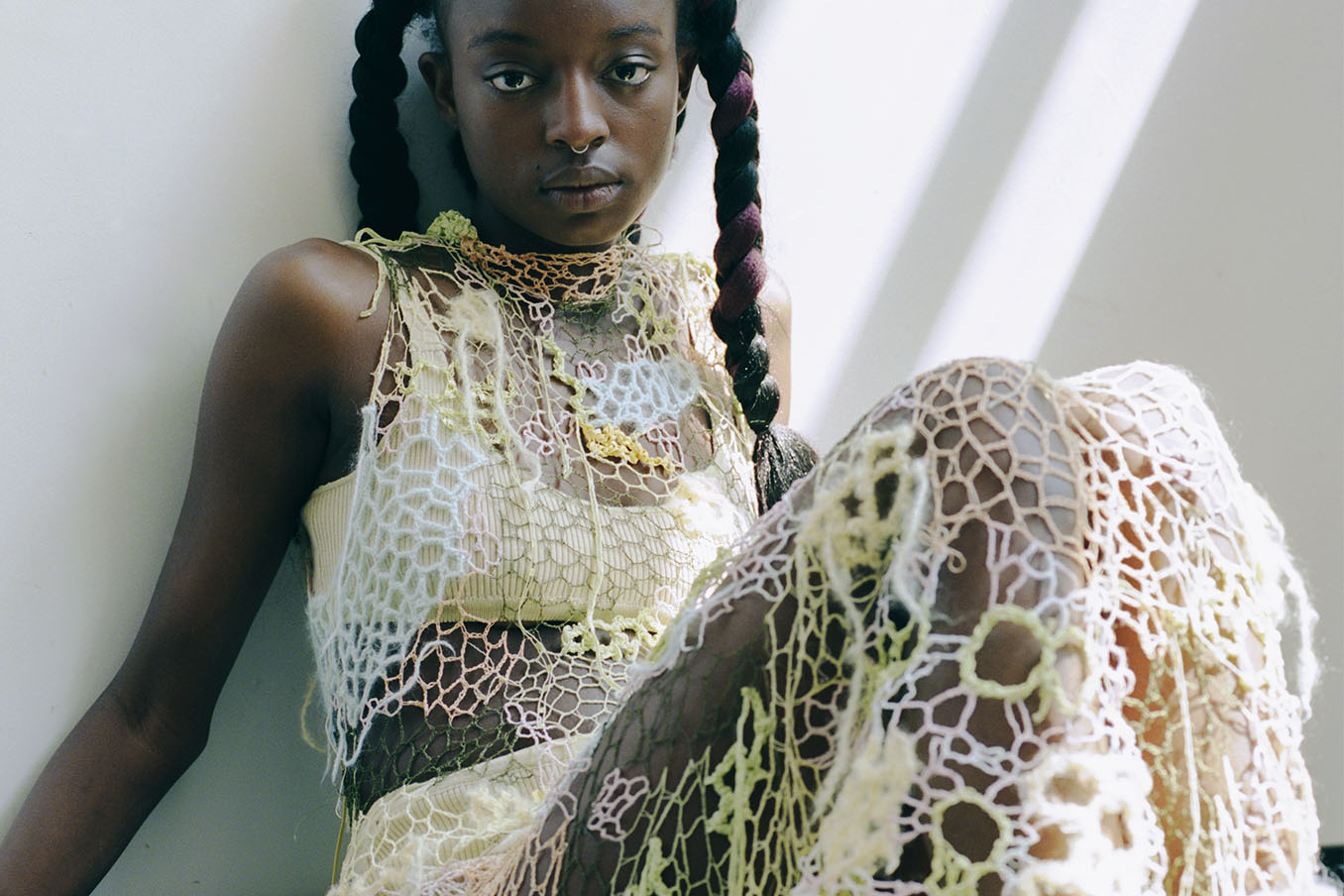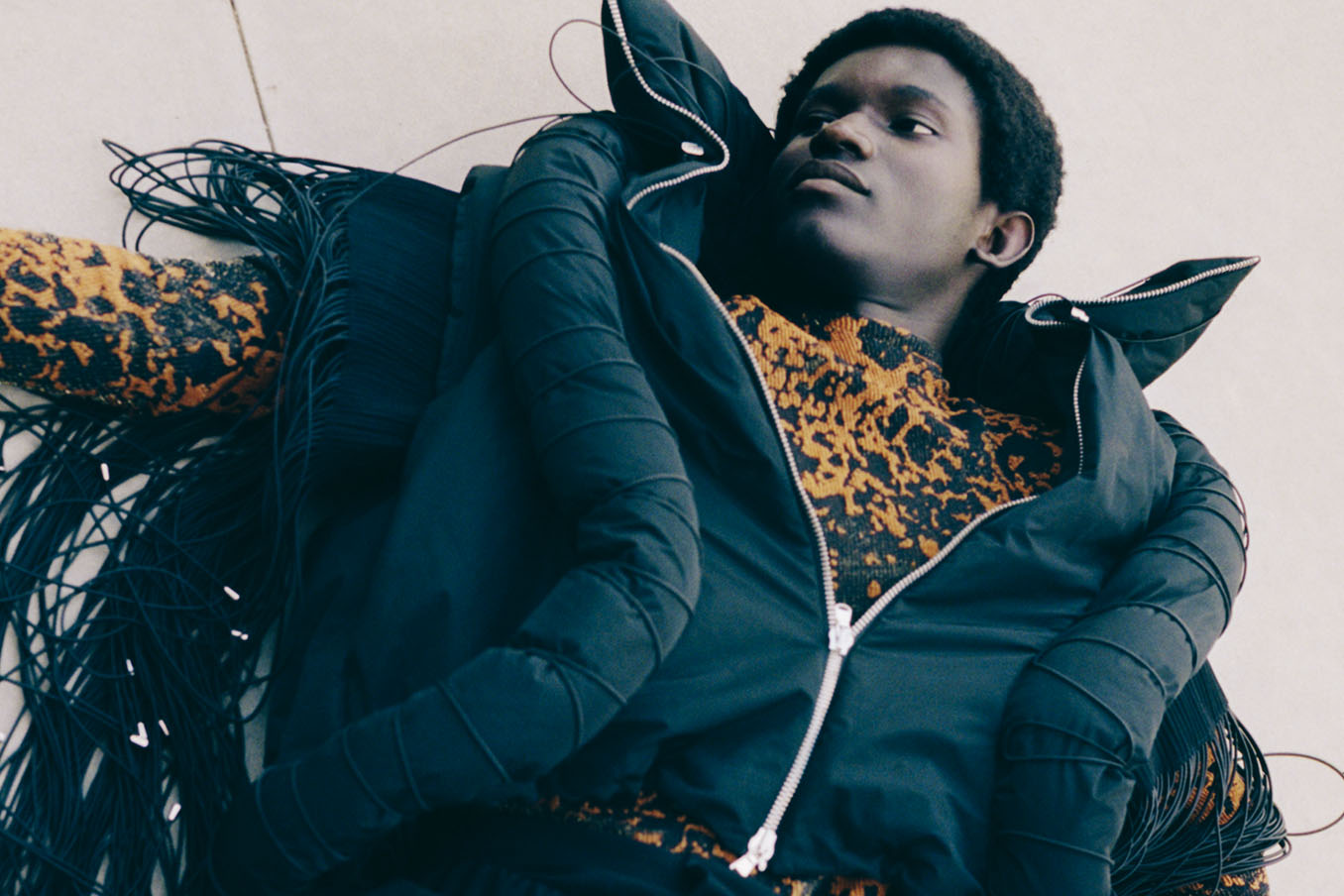Polimoda Talent 2025 winners Hatem Ben Hassine and Luigi Simonetti propose two different projects: Hatem speaks to us about an innovative phygital casting platform that streamlines the search and hiring process of models, while Luigi introduces a new brand that strives to preserve lace making techniques from the centre of Italy via its debut collection.
Polimoda Talent is a grant program open to all alumni who have an innovative project they want to launch in the industry. The grant is two-fold, consisting of consultation and mentoring services as well as a financial allocation to get the winning alumni’s projects on the right track.
HATEM BEN HASSINE
Hatem Ben Hassine is a casting force to be reckoned with. His insatiable appetite for working, collecting experiences and storytelling shapes his casting approach via his creative agency hb.
After years of working across fashion, art, and design, a brief stint as a flight attendant, and graduating from the Master in Sustainable Fashion, Hatem has built a space for intentional casting that focuses on the client’s desire to tell a story that resonates, rather than just following trends or offering basic services.
In this interview, he tells editor of Polimoda’s Journal, Phoebe Owston, all about his winning proposal for Polimoda Talent: an online platform which merges the physical with the digital to provide an effective casting solution, simplifying the process and allowing clients to browse, filter, and hire models in real time and in the same city.
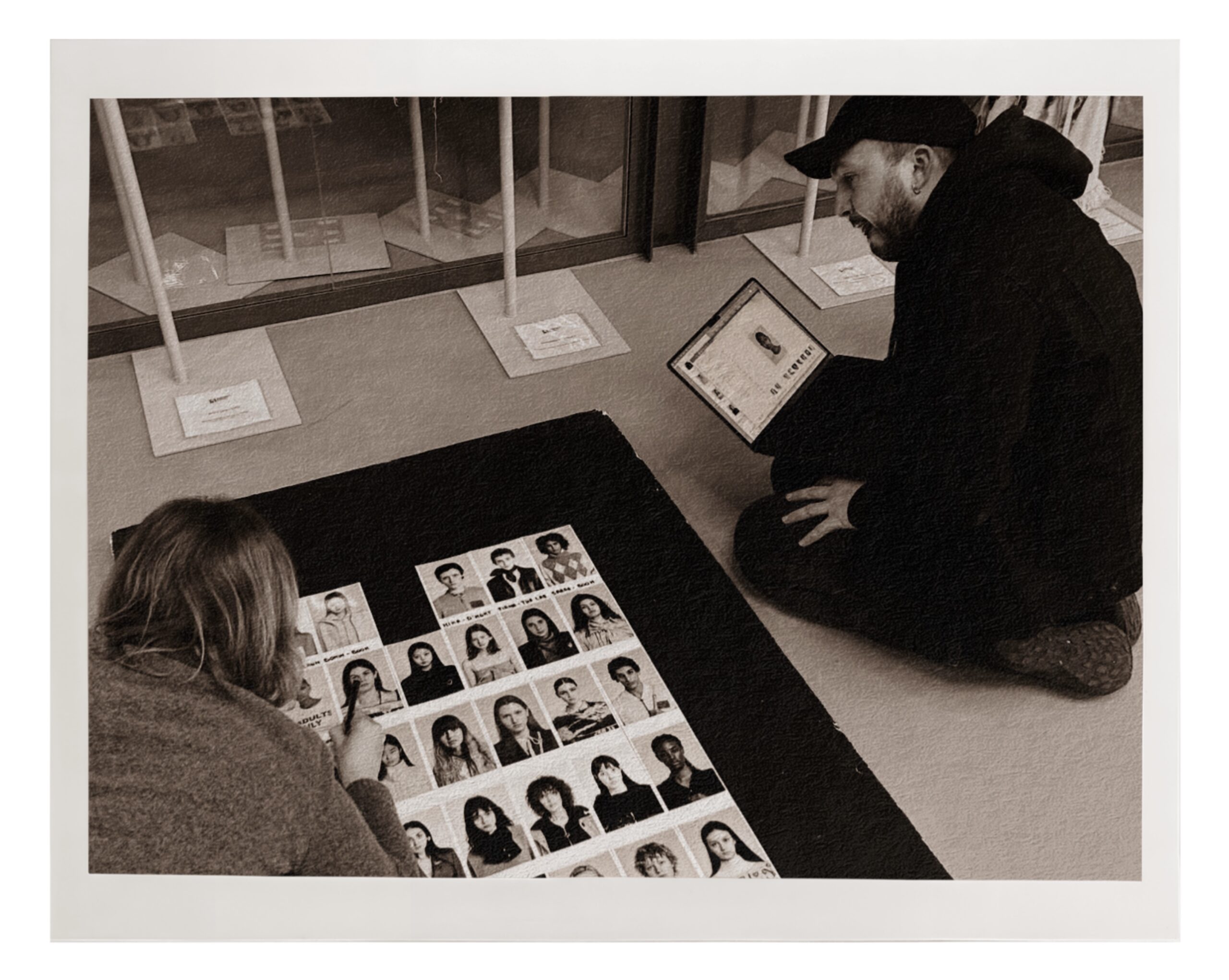
Phoebe Owston: What does casting mean to you?
Hatem Ben Hassine: Casting, for me, is an extension of my lived experience. Before stepping into fashion, I worked as a flight attendant with a global airline, which exposed me to a vast spectrum of cultures, subcultures, and perspectives. I observed beauty in its most unfiltered forms, faces, gestures, the way people carry themselves. It sharpened my eye and deepened my understanding of how identity, storytelling, and presence shape perception.
That curiosity naturally led me to casting. More than assembling a lineup, it’s about composing a narrative, creating a moment and taps into something more human. Fashion, after all, is a mirror, it reflects who we are, who we aspire to be, and the world we’re shaping. It creates belonging.
Behind the scenes of Peet Dullaert Spring 2025 Couture show. Video by adeonancira.
You did the Master in Sustainable Fashion at Polimoda, how did you go from that to working in casting?
I always worked backstage when I was young. I studied architecture and interior design in Tunisia. Then we had a bit of political issues after the revolution and I took a gap year. Then I went to university. I traveled to the Middle East for three years. I worked for a global airline. It was an opportunity to travel and see the world. I have a worldview perspective on how things grow. Then the pandemic happened. By the time the pandemic happened, I was already doing a course at Central Saint Martins. It was a Direction course, and then I finished with another additional course in Production, which was more about advertorial, magazines, publishing. This was what I felt I always belonged to, I never knew exactly what it was called or how I could get into the operating stage.
I’m interested in anything that relates to management or production, or how we make the system the most efficient and allow people to operate to their best potential, that’s kind of how it started. When the pandemic happened I thought, “I’m not just going to continue studying further and further about brand identity or visuals.” I am still one of those very old-school believers that if you have an eye, you have an eye. You can learn things in school and it’s efficient, so I wanted to choose a master that makes sense for the future.
For my master at Polimoda, I suggested doing an exhibition for the midterm and the teachers were happy to take it further. We had coverage by Vogue, L’Officiel, and Marie Claire. It was an art exhibition, but curated in a way that makes sense for artists, for creatives, for activists, vocalists, and producers. I made an installation and a sculpture.
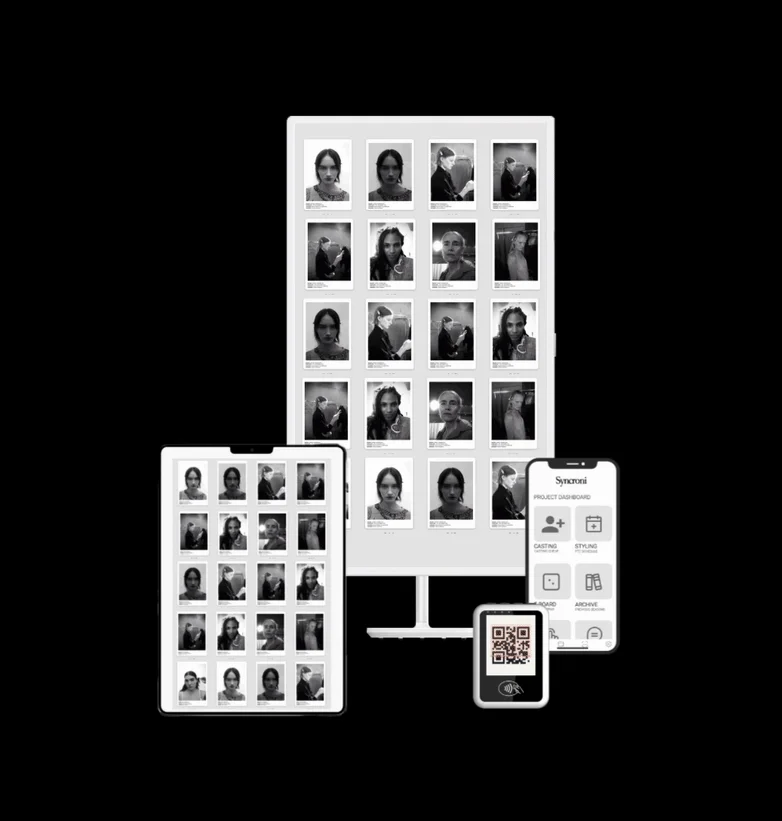
What is the power of casting in the fashion panorama today?
Casting today is more than just an industry function, it’s a language, and to me the question isn’t whether casting is powerful, it’s why it is powerful. We’ve moved beyond selecting models to fit a collection; we choose them for the stories they carry, the presence they bring. It’s no longer about a face but a force, an edge that reinforces, challenges, or redefines the narrative.
A strong casting can break conventions, shift conversations, and add layers of meaning that extend beyond the runway. Because it’s less about selling clothes and more about imprinting a moment in people’s minds. A lineup becomes a statement, a dialogue, a cultural marker that outlives the season and builds belonging.
We are not just casting directors, acting as middlemen anymore. I think this idea has long sailed. We don’t get hired for just booking models. We get hired to find the face that builds a different narrative vision or a story that reflects what the brand has been thinking about.
What is your proposal for Polimoda Talent?
My project stems from a need I’ve witnessed firsthand both in my past life, working in the airline service, and in the controlled chaos of backstage fashion. There’s a parallel between organizing an aircraft galley during turbulence and managing a fashion show’s moving parts. Both require precision, adaptability, and an ability to anticipate needs before they arise.
The industry still operates in ways that feel outdated, especially backstage. My proposal introduces a more fluid, efficient system that respects the creative process while optimizing logistics. It’s a balance between the physical and digital, a ‘phygital’ ecosystem designed to optimize workflow without compromising artistry, where technology enhances, not replaces, the tangible elements we still value. At its core, my proposal is about efficiency, resourcefulness, and respecting the creative process.
It’s like we are developing our own “Uber” of casting, where everyone gets to have a visual on who’s in town. You can get to know who’s in proximity next to you to book. We have a platform on which we are aiming to potentially see every season or every time the model is working on a creative project, who’s in town, as well as having extended filters.
From experience, when we work with model agencies, you need to go through a model one by one to know the measurements of models. Imagine you have a platform in which you can actually filter through and that tells you exactly who are the size 44 that are in town right now, who are the models from a certain ethnic background, or that helps you to find models who are ballet dancers or someone with a creative output, or a painter. These are stories we see every day now on the runway. We are not just building a lineup where everyone is just walking robotically.
What are you working on now?
Right now, we’re in an exploratory phase, building a diversified network and refining our vision for the agency. It’s a moment of expansion but also observation, we are seeing where the industry is moving, what gaps exist, and how we can carve out a space that feels both intentional and necessary.
The response so far has been overwhelmingly positive, which only reinforces that we’re onto something worth pursuing.
What are your plans with the proceeds of Polimoda Talent?
In an industry driven by speed and excess, we’re focused on something quieter: thoughtful impact, minimal waste, and an approach that prioritizes people over process.
We have won the grant, which is split into two sections. The first is mentorship with experts that we think could make sense, covering things like business management, brand identity, legal aspect, developing user experience, and business. The funding part is allowing us to refine our tools, test our systems, and build something that feels truly useful, not just another layer of noise in an already oversaturated space.
It’s still early, but the goal is clear: to create something that enhances the way we work, not complicates it. We want to offer solutions that feel intuitive, necessary, and adaptable to the industry’s evolving needs.
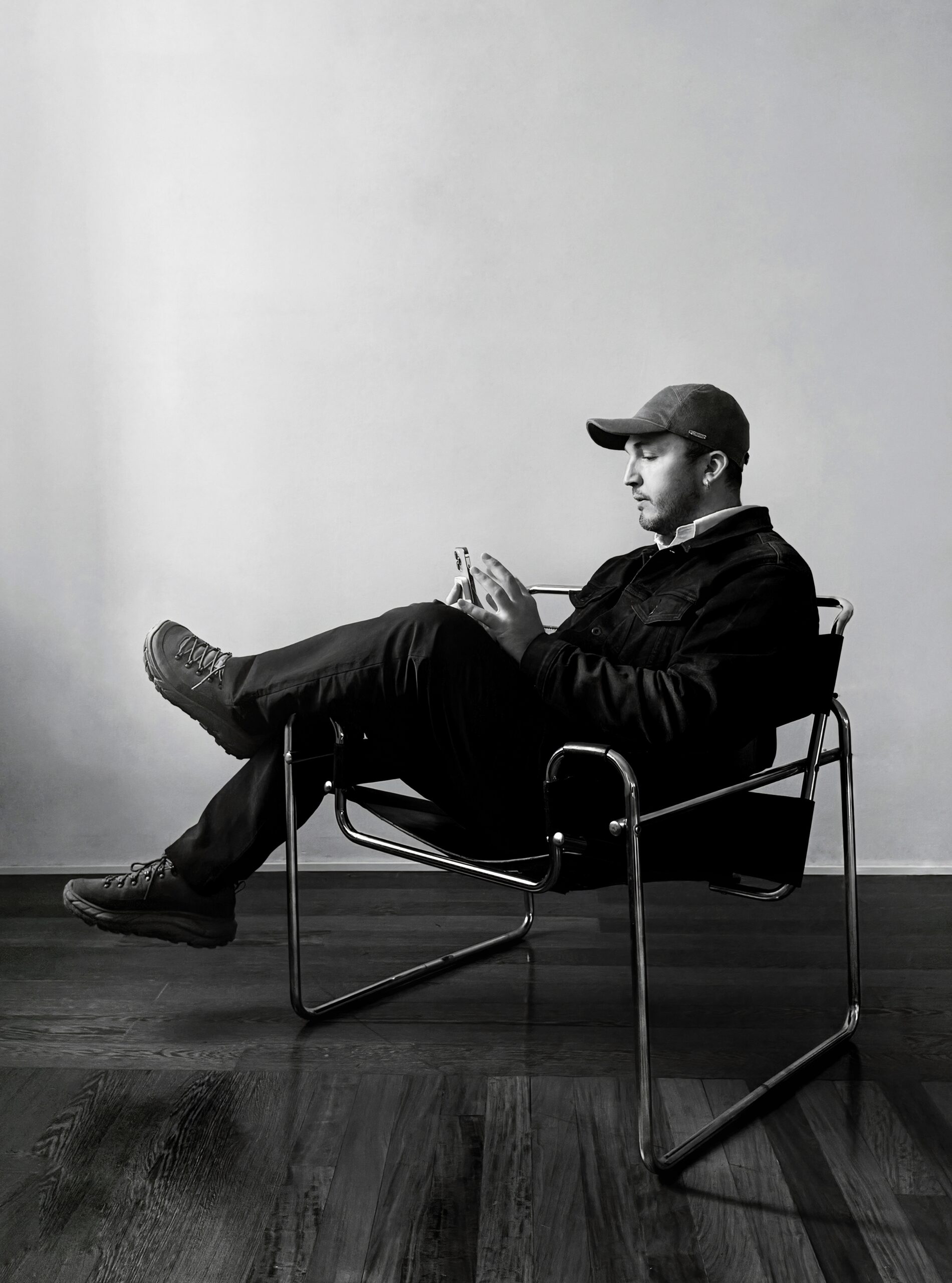
Hatem captured on set by Siyan Chen.
LUIGI SIMONETTI
Luigi Simonetti, graduate of the Master in Creative Direction, has a big idea: a brand grounded in neoclassical references and the art and beauty of Luigi’s native Italy.
Inspired by Renaissance paintings, for his first collection the young designer goes back to his family’s heritage land, between Molise and Campania, to explore lace techniques at risk of disappearing. Through an association of lace working women, he finds the perfect material for his first collection, as well as inspiration for constructing the ethos and message of Luigi Simonetti, a romantic yet modern brand whose mission is to redefine luxury through the conservation of ancient techniques.
In this interview, he reveals that his brand Luigi Simonetti is setting out to redefine luxury by using sustainable materials and high quality, artisanal, local craftsmanship in the continuation and conservation of the bobbin lace technique (tombolo or merletto a fuselli).
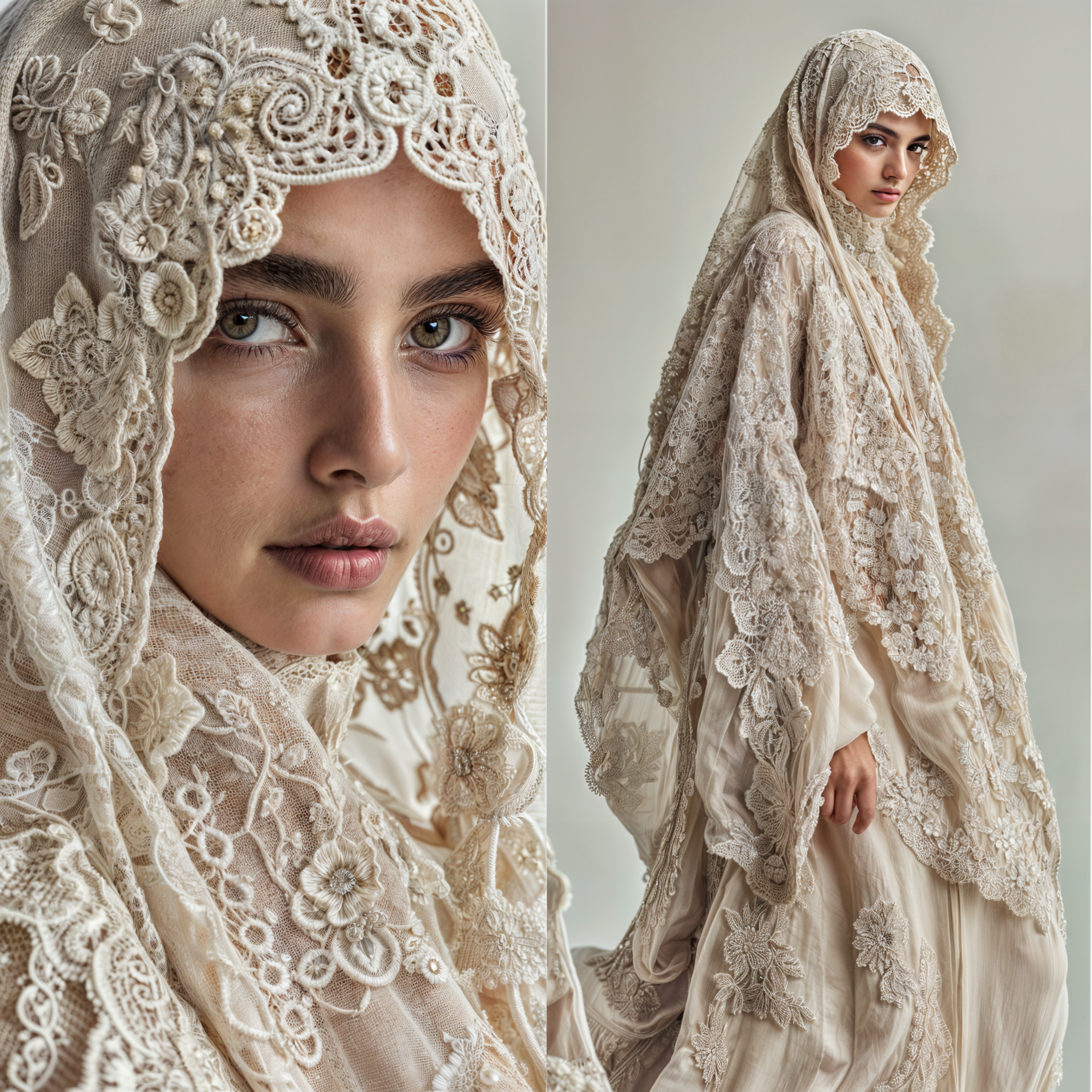
Phoebe Owston: Can you tell me about the project you presented for Polimoda Talent?
Luigi Simonetti: Luigi Simonetti is a demi-couture brand that combines Neoclassical vision and aesthetic with a romantic and modern vision. The main mission of the brand is to redefine luxury through the sustainable artisanal techniques that are being lost.
To create the techniques found on some of the garments, I’m in contact with a community of women who are in a small town in Molise. They have an association that works on conserving this specific lace making technique, as it was done hundreds of years ago, which is now in danger of being lost. It’s not just about producing something that is aesthetically pleasing, but that has meaning. The materials we use are entirely sustainable and derive from the waste of orange or banana cultivation waste or even from algae, they are all materials that are innovative and almost 100% sustainable.
How did you come into contact with the female community that does this kind of work?
My family is originally from a small town in the Isernia and Pescocostanzo area where this community is. The tombolo technique was also done by my grandmother and her friends. The association consists of around 300 women, ranging from 8 to 80 years old, who gather together to learn and practise this type of lace making.
To get in touch with the association, I called them, which wasn’t difficult but definitely interesting. They don’t operate like a company, they don’t “produce”, they are conserving this way of working. I called and I said who I was, and they were very open. We’re coming to an agreement where I help them become more well known and in return they offer me their knowledge and expertise on their craft.
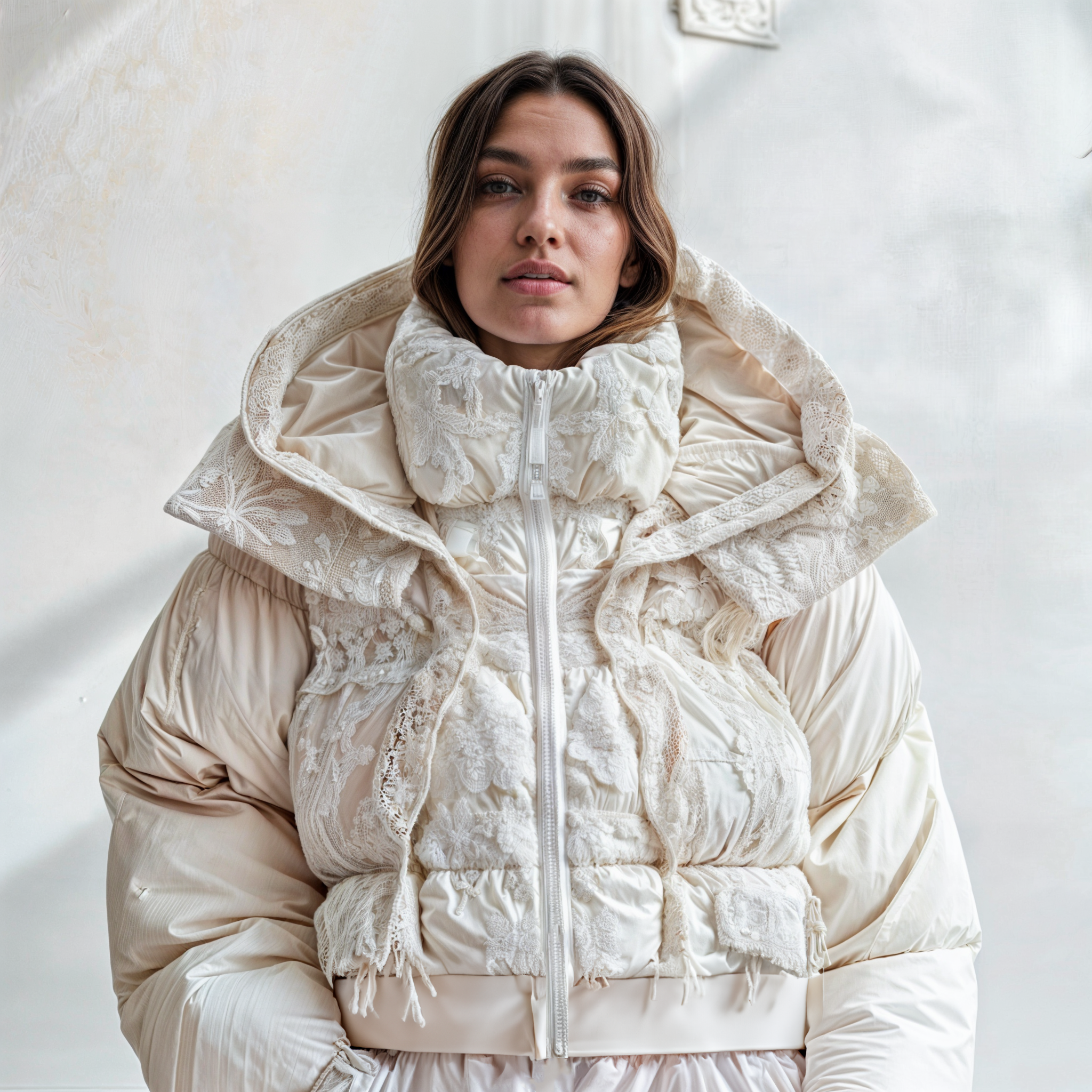
Does this lace work technique have a special design?
The design can be changed, and this is interesting for me because at Luigi Simonetti, I would like to make a technique that really belongs to us and is within the DNA of the brand while emphasizing the work of this community, so it’s great that we can think of different designs and it can be reconstructed.
Historically speaking, there are some disputes about this technique’s origins because some say it originated in Spain before being brought to Italy. There are those who say that it actually came from that specific area in Molise, but there are also other areas of Italy that practise this technique. There’s another association in northern Italy that makes a similar lace, with some differences, and in Sicily too there are some areas where they make this type of lace.
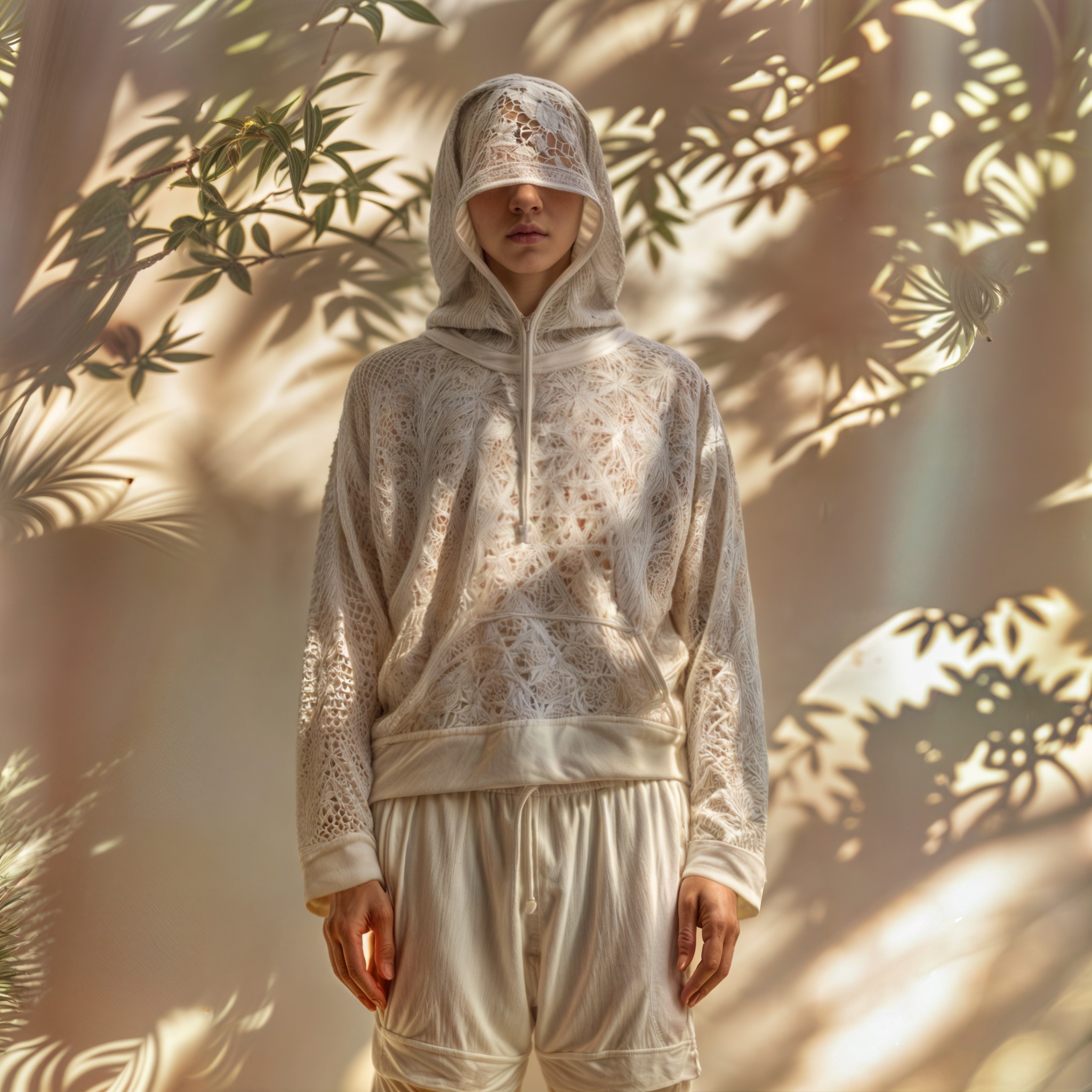
I see you’re very inspired by art and classical references. Could you explain where this comes from, both on a personal level and for your work?
Since I was little, art has always been a part of my life. Both my mother and father are passionate, they really like paintings, especially old ones, so we would often go to fairs or museums. For the brand, I focused on Neoclassicism, with a bit of a romantic vein, because it’s something that I’ve always personally liked. I like the neoclassical aesthetic canons and they inspire me a lot. Many techniques and many pieces of the collection are directly inspired by paintings or embroideries found in paintings. Fashion is a dialogue between art, culture, and innovation, and uniting these three things, in my opinion, can be done by finding them outside of fashion.
Being born and raised in Rome, you’re bombarded at an architectural level, wherever you turn you find details even in the simplest building and you ask yourself “How did that detail end up there?” Whereas in Florence there are many other things that are equally interesting; I was inspired more specifically by Florence than by Rome. I obviously included those things that are intrinsic in my upbringing, related to my home city, but Florence gave me a lot too.
Why have you chosen gold, ivory and blue as the main colours for this collection?
They are colors that I found in paintings. The main color is ivory white, from Neoclassical statues, but also for the value of ivory itself. It’s a color that is difficult to maintain, it’s pure, because even just by wearing it several times, even washing it, it darkens a bit, so it tells a story, an evolution. In my opinion, it’s a color that evolves.
Gold is the symbol of luxury and of value, and in some paintings I had seen, I even saw gold lace, made with gold-colored thread.
And then there’s light blue, which is different from the other two, it recalls a feeling of calm. It reminds me that the brand, for how I understand luxury, is slow, it’s not heavy, nor based in mass production.
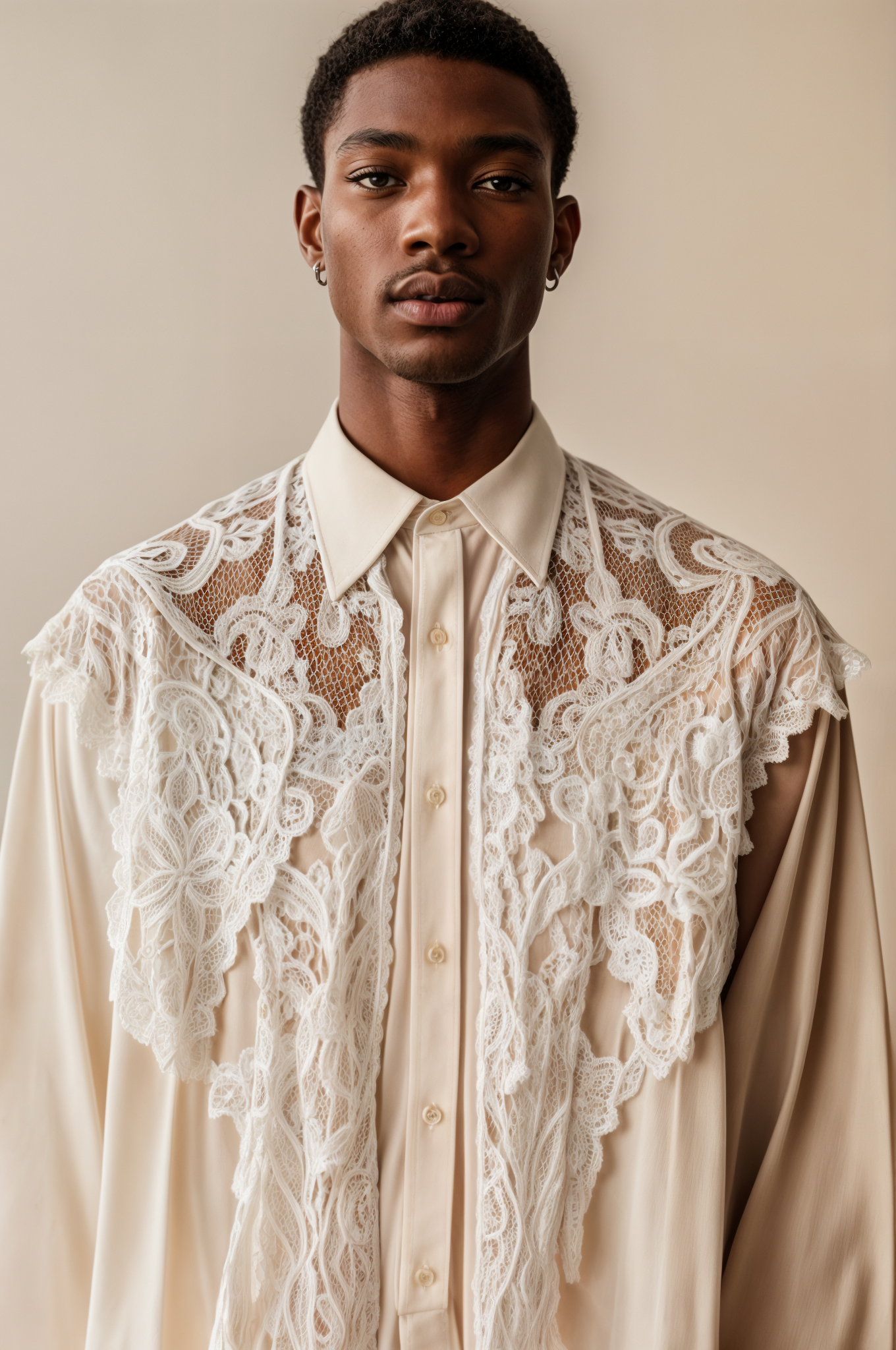
You’ve won the Polimoda talent grant, what are you working on now?
I finished my Masters last year and I’m working on my first collection. I’m contacting these communities of women to help me with their traditional techniques, and I’m researching fabrics. The collection is already more or less designed, and we are moving on to the implementation of the project, on production and the business plan.
Polimoda talent’s grant is divided into two parts, one is the possibility of having consultation from professionals, and one is having funding for your project. I think it’s an excellent opportunity because having consultations from people who are in the sector and actually know how the sector moves is much more useful than having just funding.
With the help of coordinators at Polimoda, we found some people that can consult me to develop the brand. We created this team of teachers from Polimoda who could help me with the practical implementation of the brand. I’ve had two consultations, one for the creative direction and one for the business part, and tomorrow there will be the third, on the ethical and sustainable part. So, as part of winning Polimoda talent, there’s this team that follows me.
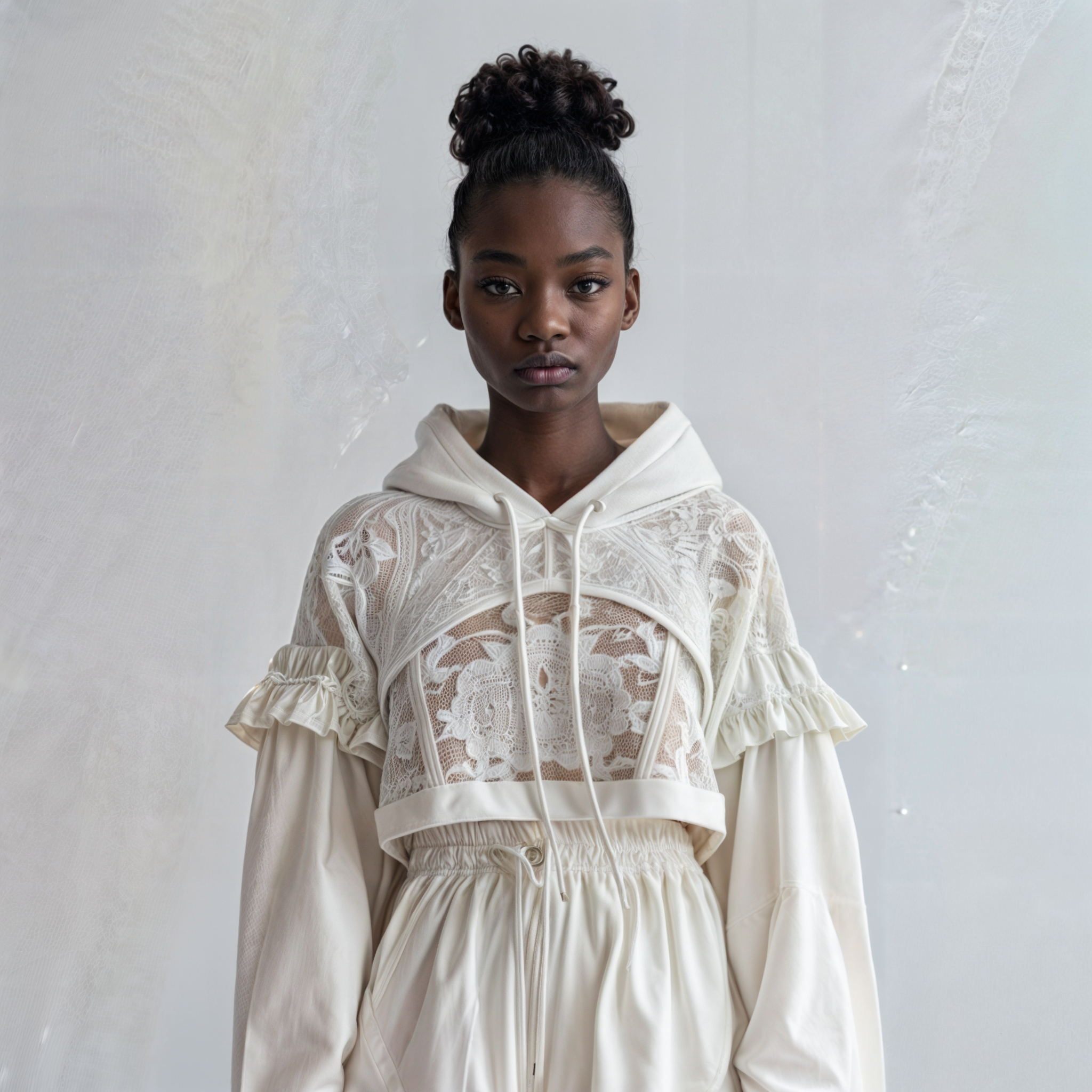
What are the next steps for the brand and what are your long-term goals?
The next steps for the brand will be the definition of the business plan, prototyping garments, then communications, then going to production. For the future, I would like the brand to grow, even though, to be able to offer the right luxury product, a product that is based in artisanal techniques, I think it’s hard to maintain that when you reach greater production levels. I know that certain techniques take a lot of time, and if not done in this way, these techniques no longer have a value, or a meaning. I would like the brand to stay niche, meaning sustainable, and above all ethical. I would like it to carry on giving value to the people behind it because all the people who work on the various garments have a value that cannot be set aside for an enormous production.
